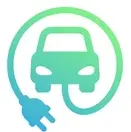I’m considering buying an EV to replace my aging diesel. I live in a very cold country where temperatures regularly dip below -30C in the winter.
I understand that EVs lose range in cold temperatures and that they need heating to use and charge without damage.
My question is this: if I plan on not using my car for several weeks, can I leave it unplugged and/or tell it to stop managing the batteries’ temperature to save energy and not damage the batteries?
I’m okay with spending half a day preheating it when I plan on using it again regularly, but I don’t want it to draw current all the time for nothing when I’m away on long missions.
For some reason, I can’t seem to find out if it’s safe to keep a fully unpowered EV in the cold for a long time…
Cold doesn’t damage the battery. Batteries are basically electricity pumps. When they’re cold they’re less willing to give up their electrons. But being cold isn’t inherently good or bad. It essentially reduces the efficiency of the pump.
Generally speaking the thing you want to avoid with ev batteries is getting them too hot. Heat damages them more than anything else.
The next temperature related thing is putting a heavy load on the battery when it’s too cold. The important thing with this is a cold battery itself isn’t necessarily bad, it’s putting a heavy load on a cold battery that’s bad
Also generally speaking, the healthiest state to store a battery is half charged.
If you’d like to read up on it the thing to search for is “lithium plating.”
So long story short, if you’re going to leave your EV for weeks at a time, the best thing you could do is leave it plugged in to a wall outlet and set the charge limit to 50%. Remember, EV batteries don’t lose electricity when they’re cold, they just can’t pump all the electrons in them because they’re cold. If you leave it plugged in and set the charger limit to 50% it’ll maintain the battery at a good state of charge. It won’t draw that much electricity either.
I know enough about Li-Ion to know that they don’t like overcharging or undercharging, and even how they charge, since I’m an electronics engineer. But only at room temperature 🙂
What I didn’t know is whether the cold alone damages them. You know, kind of like when living tissue gets damaged under the freezing point of water because ice crystals form and pierce the cells irreparably: I thought perhaps one of the chemicals in Li-Ion cells also migrated away from where they should be, or formed harmful solids or something that would damage the battery cell - without even pulling or pumping any current.
It sounds like it might be safe to leave the car in cold storage with only a trickle charge then.
Also, I spoke to a friend who has a plug-in hybrid (a rebadged Toyota RAV-4 I think): he says there’s a control that he can set to warm, cool, auto or off for the battery pack temperature control, and he recently left his car parked at the airport for several days on off with the temperatures below -13F. So I’m guessing it must be okay to do that. Also, apparently his hybrid gives up and simply refuses to run on batteries below 10F, so I’m guessing the battery pack warmer isn’t very powerful and it’s not too critical to let it go cold.
I’m not an EV owner (but spent 50 years in a climate like that). I found this: https://cluballiance.aaa.com/the-extra-mile/articles/prepare/car/store-an-electric-vehicle-over-the-winter
and this: https://insideevs.com/features/342917/cold-weather-electric-car-tips-maximize-your-ev-for-winter/
for example, by searching for “storing an EV in a cold climate”.
Like a gas or diesel, it’s important to keep your battery fully charged for those arctic mornings (EVs have two!) Even then they need help (I used to plug-in an engine ‘tank heater’ an hour early on those days.)
(As an ex-diesel mech, at those temps, the fuel gets thick! So do the electrolytes in batteries, so they take longer to charge.) So for an EV, look into ‘preconditioning’ the battery before re-charging. )
Thank you so much for the link! I’ll read all that when I’m back home.
As an ex-diesel mech, at those temps, the fuel gets thick!
Yeah that’s a problem for my old diesel, because it’s a car I imported from a warmer country I lived in previously, and it’s just not equipped properly for winter conditions. I had one of those coolant warmer / pump combos installed because the block can’t even take a block warmer, I have special cold runny oil in it and I feed it diesel with additives that go down to -23F. But more and more often, while it will turn over just fine, it just won’t catch. The glow plugs are new, there’s enough compression, but… I guess it’s getting old and annoying enough that I’m thinking of buying a new car.
Although if I’m honest, if it was an option, I’d rather have it converted: I’m reliably told that it’s just about impossible to find a nice new car that isn’t connected to the internet and spying on you constantly, so I’d really rather keep my old, simple, privacy-respecting car. But it’s not feasible - at least not economically.
I’ll have to see what my options are for a nice, simple, small and lightweight EV.
I’m reliably told that it’s just about impossible to find a nice new car that isn’t connected to the internet and spying on you constantly, so I’d really rather keep my old, simple, privacy-respecting car.
That’s what I’ve heard also. (MAYBE you could find someone to disconnect that … But you’d still have to BUY it along with the car!)
I know people who are keeping their older vehicles going a LONG time by replacing ANYTHING that breaks. Cheaper, if you’ve got a model you can easily get parts for. I live in a city and take the bus … when it’s warm out!
Removed by mod
No. My company sends me to help our customers abroad install and setup our products, sometimes for weeks at a time.
Most EVs have something Iike a heat pump to keep battery temperature optimized and extend the life of the battery pack. Most EV user manuals tell you to keep the car plugged when not in use during extremely cold or hot weather. This way the batteries can be heated or cooled without draining car power. If you don’t do this, the temperature regulating system will kick in on battery power, and start to drain the batteries until there’s nothing left.
If you don’t do this, the temperature regulating system will kick in on battery power, and start to drain the batteries until there’s nothing left.
Can it be disabled totally - whether or not the car is plugged in? Also, are you implying that an electric car must keep its battery pack above a certain temperature to prevent damage even if it’s totally unused?
The core issue for me to decide EV or no-EV is that I absolutely don’t want it using any power when it’s off for a long time. I don’t mind taking time to “awaken” it from a deep slumber properly to avoid damaging the battery pack, and I don’t mind babying it, preheating it and whatever else needs to be done when it’s cold when I use it. But if it draws power for weeks on end just to avoid dying on the parking lot when I don’t, that’s a showstopper for me.
you should wait for sodium battery cars then. sodium doesnt have the freezing temperature problem that liion batteries have.
https://www.tesla.com/ownersmanual/model3/en_us/GUID-7FE78D73-0A17-47C4-B21B-54F641FFAEF4.html
“For better long-term performance, avoid exposing Model 3 to ambient temperatures above 140° F (60° C) or below -22° F (-30° C) for more than 24 hours at a time.”
It depends on a lot of factors including the battery chemistry.
NMC (Lithium ion) batteries are common in high performance cars and older EVs. They should be kept between 20% and 80% charge for normal use. 60% is ideal for storage, but anywhere in that range will do.
LFP (Lithium ion) batteries are common in cheaper and newer EVs. They don’t have a problem with being stored at 100%, and do have issues with not being regularly charged to 100% (monitoring gets less accurate over time until fully charged again), so leaving it at 100% is fine.
Lead acid (particularly calcium) batteries get damaged when discharged too much, so it’s fairly important to keep them topped up. If you are leaving the car for a long time, it could be worthwhile to connect a trickle charger to the 12V battery to prevent the car’s computer from gradually draining the battery. Some cars will top up the 12V battery from the high voltage battery if left for a while, so this may not be needed.
While I have little experience with low temperatures, I suspect that the car will be fine if left as stated above. The battery shouldn’t get damaged by low temperature storage, and shouldn’t lose much charge over time. Just don’t expect full performance immediately after returning to it.
I don’t know about starting difficulties, because I was in a warmer climate, but there are other complications for the cold.
I used to have a 2018 Nissan Leaf (I bought it used, but the battery was still testing at 100%), which ostensibly had about ~240km range. It didn’t get to -30C, but at about-5C if you use zero climate control (also different from an ICE car, it stays colder because the engine isn’t hot), you could get about 210 km. With low climate control, it’s more like 160 km (I don’t think I ever used high heat, but I imagine that’s more difficult in -30). Depending on your lifestyle, that’s not a big deal, but I had to charge in inconvenient places anytime I wanted to do more than a commute to work or local errands in the winter.
Today’s EVs are generally higher range, so factor that in as well. If it’s possible to do an extended test drive, I’d suggest trying one in winter.
Today’s EVs are generally higher range, so factor that in as well. If it’s possible to do an extended test drive, I’d suggest trying one in winter.
Actually I’m not that concerned about the range. I need something that will do 15 miles to work (charge at work on the free charger provided by my company) and 15 miles back home (no charge, or slow charge on a regular outlet). I think just about any EV or plug-in hybrid can achieve that in any conditions.
Ideally, I’d like to find the lightest, smallest, simplest compact EV possible.
That should be good! My commute was 18 miles with free charging at work and I never had to stop to charge on a direct ride home.
I did once nearly get fucked by stopped traffic in the winter- I had the heat on normally until the jam, and then turned it on for 5 minutes every fifteen minutes while standing still. After about 90 minutes, the traffic cleared, but I was very cold and had about 20% battery by the time I got home. That’s a good amount, but I’d started less than 20 miles away with a full battery. ICEs are also less efficient in traffic, but they heat the car with excess engine warmth, so it’s not an additional drain on mileage.
I’d advise people to keep a space blanket and hand warmers in any car, but especially an EV. If you’re in an area prone to heavy traffic, maybe keep them close enough to reach from the driver’s seat.
ICEs are also less efficient in traffic, but they heat the car with excess engine warmth
Not mine 🙂 My car has a very small turbo-diesel (1.3L), I tend to hypermile so I drive slowly and in higher gear, and in the winter, below -15C, the temp needle only gets close to normal operating temperature and starts warming up the car on the highway.
That’s also something I learned when I moved here in northern Scandinavia: bigger engines are better because they reach normal operating temperatures in almost all conditions. My little underutilized engine just plain can’t get warm enough to heat the cabin significantly.
We should be specific. This would be the standard 12v battery at fault; the pack batteries aren’t used to start an EV, not from what I’ve ever seen. I’ve a VW ID.3 and we had our 12v battery replaced with a heavy-duty one under warranty because many modern cars and their telemetrics, subsystems, cabin heating, etc will drain the 12v starter battery over an extended period of just sitting. The 12v usually runs the cockpit - not your big battery. Your big battery will top the 12v off.
The pack battery can sit for weeks - you do need to make sure it’s about 50-60% charged, no more or less, or you can incure aging to the battery. I’ve spent 3 weeks away a few times and lost 3-5%, so roughly 1%-1.5% a week, and this is both in Dutch winter (-2C) and summer (20C). It’s also important to not have the car preheat needlessly, so if there’s a scheduled departure time in the system, turn them off for that period you’re away. THAT runs off the 12v battery and will drain both batteries quickly.
But this is also the same as it’s ever been for ICE cars too - I lived for a decade in Colorado and we’d have glow-plug and charger boxes near the parking so we could trickle-charge a battery or keep the engine oil from becoming sludge when starting.
This heat-pump article in Wired today (Jan 19) may be of some use to someone.
“How the Mighty Heat Pump Is Helping (but Not Solving) EVs’ Cold Weather Problem”
https://www.wired.com/story/heat-pump-helping-but-not-solving-ev-cold-weather-problem/
Interesting, thanks.
But you know what? The main takeaway from this article from me is “EV cold weather problem”: yeah, problem is right. The more I read about it, the clearer it becomes to me that owning and operating an electric car where I live is a constant uphill battle to keep something working that doesn’t want to work.
And so the more I think about it, the more I think an EV isn’t for me. For someone like me who doesn’t drive much and only drives infrequently, below -5C for half of the year, it’s just too much of a hassle. Not to mention that I’m not keep on getting a new vehicle that spies on me.
So I’m more and more thinking of getting my old diesel fixed and winterized some more, with heating elements where it counts, or getting an old gasoline car in good condition already equipped with winter equipment. That will solve all my problems at once, at the cost of missing out on free charging at work and extra maintenance.



